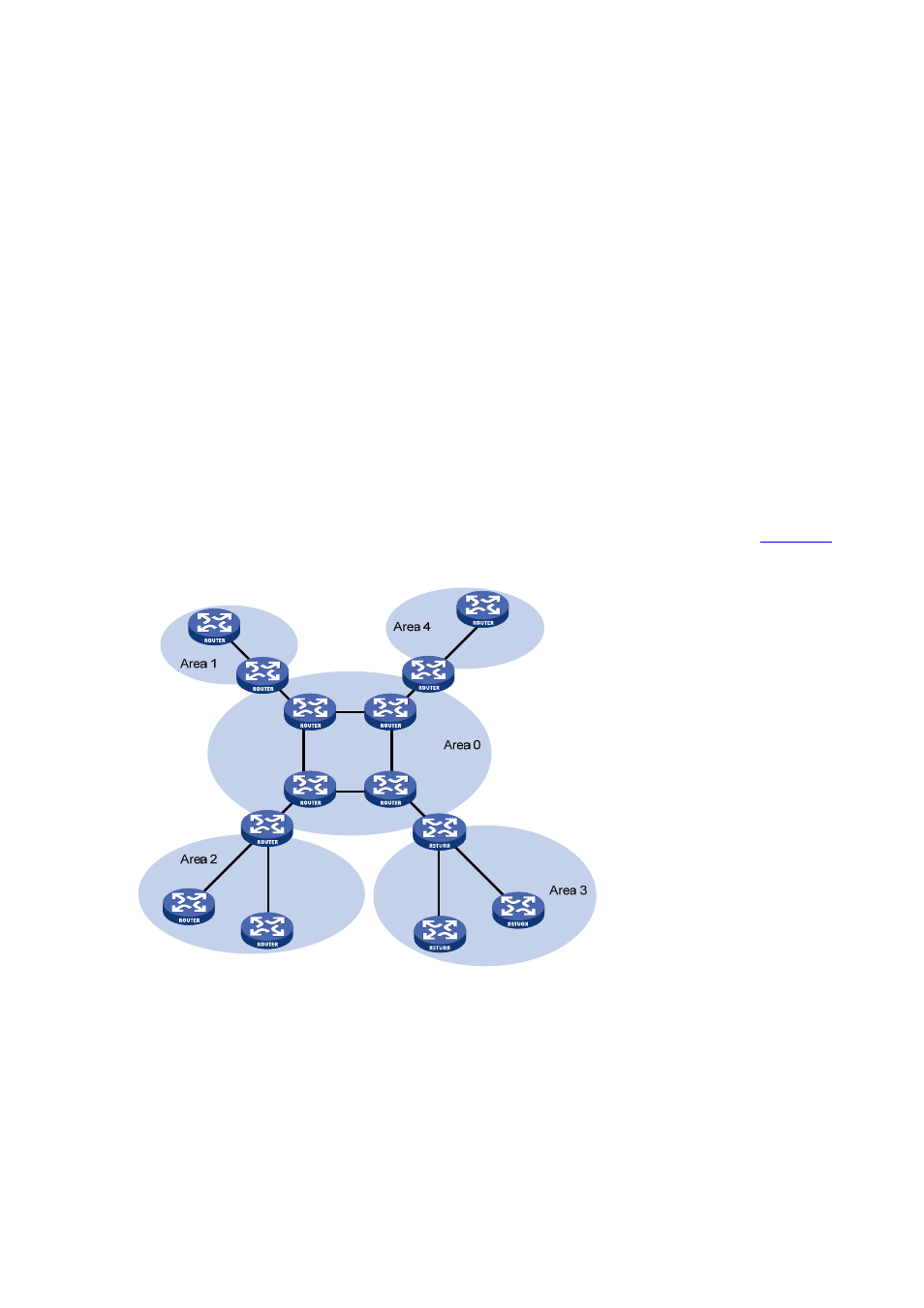Ospf area partition and route summarization, Area partition, Classification of routers – H3C Technologies H3C S3600 Series Switches User Manual
Page 331

4-4
sends a hello packet through the OSPF interface, and the router that receives the hello packet checks
parameters carried in the packet. If parameters of the two routers match, they become neighbors.
Adjacency: A relationship formed between selected neighboring routers for the purpose of exchanging
routing information. Not every pair of neighboring routers become adjacent, which depends on network
types. Only by synchronizing the LSDB via exchanging DD packets and LSAs can two routers become
adjacent.
OSPF Area Partition and Route Summarization
Area partition
If all the routers on an ever-growing large network run OSPF, the large number of routers will result in an
enormous LSDB, which will consume an enormous storage space, complicate the running of SPF
algorithm, and increase CPU load.
Furthermore, as a network grows larger, it is more likely to have changes in the network topology.
Hence, the network will often be “flapping”, and a great number of OSPF packets will be generated and
transmitted in the network. This will lower the network bandwidth utilization. Even worse, any change of
the topology will cause all the routers on the network to re-perform route calculation.
OSPF solves the above-mentioned problem by dividing an AS into multiple areas. Areas refer to groups
into which routers are logically divided. Each group is identified by an Area ID, as shown in
.
Figure 4-1 OSPF area partition
On the border of an area is a router, which belongs to different areas. After area partition, area border
routers perform route summarization to reduce the number of LSAs advertised to other areas and
minimize the effect of topology changes.
Classification of routers
The OSPF router falls into four types according to the position in the AS:
1) Internal
router
All interfaces on an internal router belong to one OSPF area.
